Museums, Theaters, Architecture, Klagenfurt
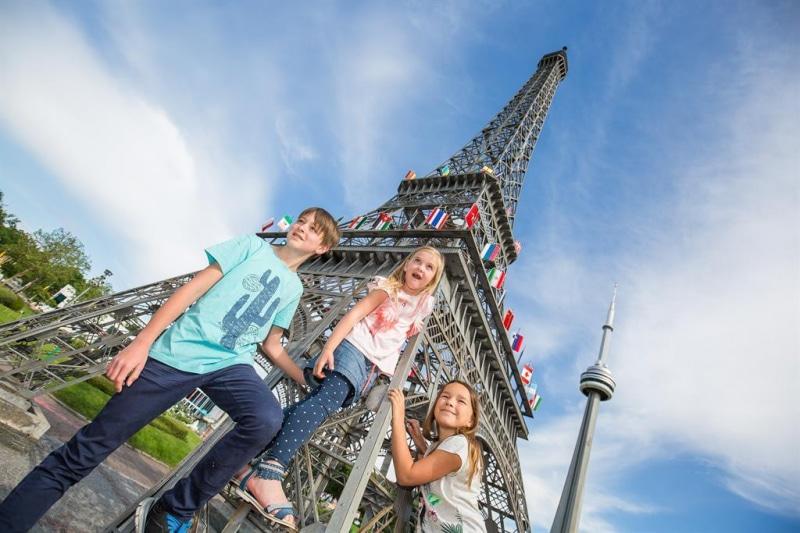
Removed from Unnamed collection
Minimundus 
Around the world at top speed: See 156 models of the most beautiful buildings from over 40 countries around the world up close! Minimundus, the miniature world at Lake Wörthersee, is a place for exploring, having fun, spending time, learning and enjoying.
With models from every continent, the world is miniaturised, covering over 26,000 m² of parkland. On a scale of 1:25, the most beautiful buildings have been recreated in detail according to original plans and using original materials such as marble, sandstone or lava basalt. Nowhere else can you experience the world in just one day.
Experience the Minimundus of the next generation. An exhibition of new dimensions, with adventure, games and fun, covers over 1,500 m². https://www.visitklagenfurt.at/en/discover-and-experience/worth-seeing/316-minimundus.html
Map

Removed from Unnamed collection
Pyramidenkogel Tower 
From the Pyramidenkogel visitors can enjoy impressive wide-ranging views of the proud summits of the Hohe Tauern to the north as far as the Karawanken, and towards Italy and Slovenia beyond the borders of the province of Carinthia.
The ride to the top of the tower in the transparent panoramic lift offers picturesque views of the surrounding lake valleys, and active visitors can also climb the stairs to the top. Three viewing platforms guarantee a breathtaking view. The highest platform is a proud 71 metres high and houses the “Sky Box”, a room which is flooded with light and protected against the weather. This will be used as events venue in future. The unique tower design consists of 16 stilts made of laminated timber, stabilised by means of ten steel rings and with 80 diagonal struts which tower impressively upwards. https://www.visitcarinthia.at/attractions/quality-seal/pyramidenkogel-observation-tower/
Map

Removed from Unnamed collection
Observatory Klagenfurt 
In 1965 an observatory was built atop the old stone lookout tower amid the broad woodlands of the Kreuzbergl in Klagenfurt. From its viewing platform, the observatory offers unforgettable panoramic views of Klagenfurt and the surrounding mountains. With the help of a giant telescope and a modern astronomic navigation system, you will be able to gaze on live images of the moon, planets, binary stars and other unique features of the heavens. Parking is available at the Schweizer Haus or the Botanical Garden, with a clearly marked footpath (also lit up after dark) leading to the observatory. https://www.visitklagenfurt.at/en/discover-and-experience/worth-seeing/292-sternwarte-klagenfurt.html
Map

Removed from Unnamed collection
Klagenfurt Cathedral & Cathedral Square 
Commissioned by the territorial estates as a Protestant church in 1578, it was designed by architect Christoph Windisch. Klagenfurt Cathedral is the oldest pilaster church in Austria. The 23 paintings on the walls and ceilings were painted over several times in the course of the years.
The Catholic Reformation Commission closed the cathedral in the year 1600. Four years later it was handed over to the Jesuits who managed the Jesuit school next door until the order was closed in 1773. A fire destroyed major parts of the church in the year 1723. Reconstruction did not begin until 1725. The Carinthian Baroque painter Josef Ferdinand Fromiller created the John of Nepomuk apotheosis. The church was raised to Cathedral status in 1787. The Cathedral was renovated in the 1890s and shines today in the lustrous Baroque colourfulness of the 18th century. https://www.visitklagenfurt.at/en/discover-and-experience/worth-seeing/285-klagenfurter-dom-domplatz.html
Map

Removed from Unnamed collection
Lindwurm Fountain 
The dragon depicted on the fountain is the symbol of the city. There is a lovely square around it where you can sit and relax.
In the 13th century a dragon was wreaking havoc in Klagenfurt, causing floods that destroyed crossings and threatened travelers along the River Glen. A duke offered a reward for anyone who could capture it, and a brave young man tied a bull to a chain and caught the dragon like a fish.
In 1335 the dragon’s skull was found in a nearby quarry aptly known as Dragon’s Grave. The capital city of Carinthia proudly displayed it in the city’s town hall, and in 1590 Ulrich Vogelsang used it to make what is often cited as the earliest known reconstruction of an extinct animal—it’s attributed to Vogelsang, but it’s more likely an anonymous artist made the sculpture, carved from a single block of chlorite slate. Legend claims 300 men, dressed in all white, carried the six-ton beast to the center of town. https://www.atlasobscura.com/places/lindwurmbrunnen
Map
Explore more places related to this search:
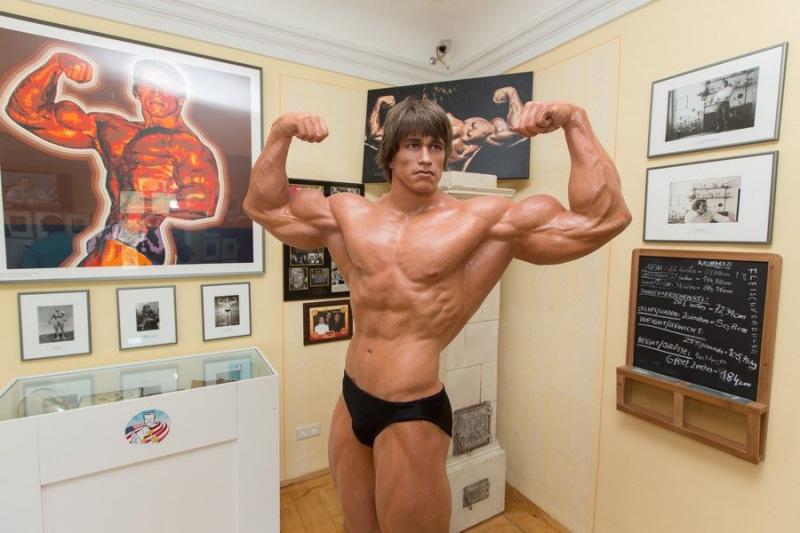
Removed from Unnamed collection
A. Schwarzenegger Museum 
“I’ll be back.” Hardly anyone could fail to recognise Arnold Schwarzenegger’s famous line. Even though he doesn’t actually come back in person that often, nevertheless you can gain, at the very least, an intimate insight into the childhood and career of this international star at the Arnold-Schwarzenegger Museum, located at his place of birth in Thal near Graz. The beautiful building was constructed in 1806 and is the original forester’s lodge of the Count of Herberstein and Eggenberg. https://www.graztourismus.at/en/see-and-do/sightseeing/trips-around-graz/a.schwarzenegger-museum_af-1207
Map

Removed from Unnamed collection
Eggenberg Palace 
The universe is in Graz! It’s no joke, but rather a wonderful example of harmonious architectural skill: Eggenberg Palace on the edge of the city centre. Set within a beautiful park is the main palace, which was laid out as an architectural allegory of the universe. The building represents a precisely calculated cosmos. It was commissioned by Prince Hans Ulrich von Eggenberg from the year 1625 to embody his wish for a harmonious structure, reacting to the chaos of the 16th century.
365 windows, 31 rooms on each floor, 24 state rooms with 52 doors and, in all, 60 windows, 4 corner towers - all allusions to time, to the seasons, to weeks, days, hours, minutes. This number symbolism based on the then new Gregorian calendar is the architectural programme of the palace. Also the paintings in the Planetensaal (Planet Hall), whose decoration was started in 1678, are characterized by astronomical symbolism. https://www.graztourismus.at/en/see-and-do/sightseeing/sights/eggenberg-palace_sh-1199
Map
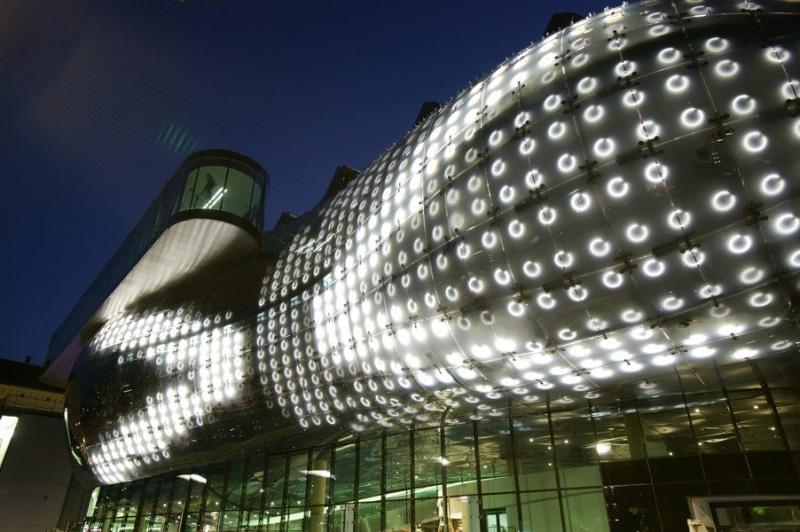
Removed from Unnamed collection
Kunsthaus Graz Art Museum 
Whilst it’s not common for existing, traditional urban buildings to sit so perfectly next to breathtaking new architecture, with the setting of this museum of contemporary art in Graz it’s definitely the case. The Kunsthaus floats like a mysterious blue balloon between the roofs of the historic city centre. Named friendly alien by its creators, its fascinating magic draws visitors in.
Sometimes dreams come true. As the dream about a Kunsthaus in Graz. The site was a good choice. The right bank of the river Mur, so far a more or less neglected part of the city. The neighbourhood: the Eisernes Haus (Iron House), a nearly forgotten, as hardly visible, formerly bold cast-iron construction built by Graz architect Josef Benedict Withalm in 1848. https://www.graztourismus.at/en/see-and-do/sightseeing/sights/kunsthaus-graz_sh-1097
Map

Removed from Unnamed collection
Island in the Mur 
Island or boat? It isn’t easy to tell with this extravagant steel construction by US-American artist Vito Acconci. The Island in the Mur, Graz was commissioned as part of the city’s role as Capital of Culture in 2003. What is clear is its function as a link between river and city, a wonderful place to drink coffee or enjoy a cocktail. With the river Mur swirling cheerfully by on both left and right sides, from the Murinsel you can appreciate a completely new perspective of the city of Graz.
The island has brought the river Mur back to the people of Graz. Up to a few years ago, the river had been polluted by sewage water and industrial effluent. So the fact that the Mur had dug itself 12m deeper into its riverbed after its regulation in the 19th century hardly bothered people. Now the river connecting and dividing the city has a good quality of water again, has become inviting. https://www.graztourismus.at/en/see-and-do/sightseeing/sights/island-in-the-mur_sh-1223
Map

Removed from Unnamed collection
Landhaus Courtyard 
What a perfect place for a party! The inevitable thought if you step into the Landhaushof in Graz. Taking in the Renaissance surroundings of this inviting location immediately conjures up colourful images of people enjoying festivities. Here in the summer, flowers decorate the magnificent arcades and, at Advent, the celebrated ice nativity scene finds a perfect setting. In between, concerts, theatre and indeed all manner of festivities take place in the splendid atmosphere of the Landhaus courtyard.
A touch of Northern Italy in Herrengasse, right in the centre of Graz? In fact, the Landhaus is reminiscent of some Venice palazzo. In 1557, the Italian architect Domenico dell’Allio started to construct a prestigious building for the Styrian estates. It still is the provincial parliament of Styria. https://www.graztourismus.at/en/see-and-do/sightseeing/sights/landhaus-courtyard_sh-1246
Map
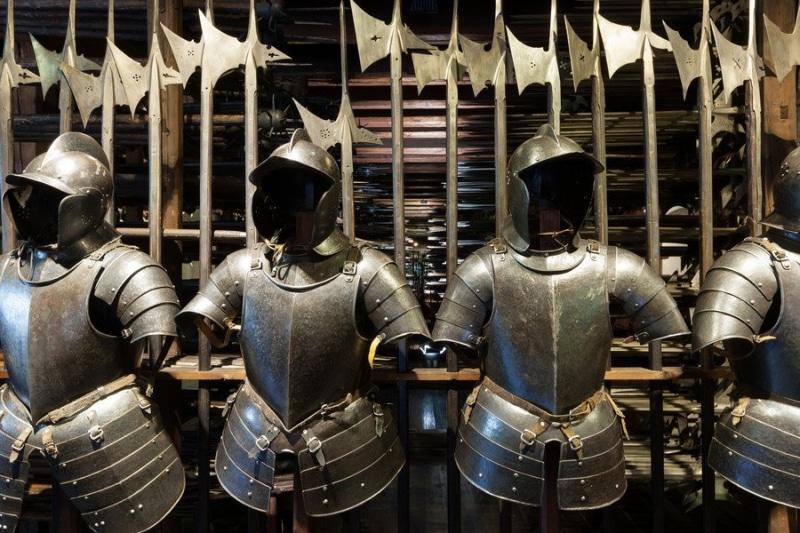
Removed from Unnamed collection
Armoury 
A knight’s tale of passion? Certainly fitting for some of the warriors in shining armour. At the Landeszeughaus armoury of Graz, standing in rank and file are the armour and weapons of valiant warriors of the Middle Ages. The special historical setting and sheer number of collector’s items make a visit to the Graz armoury a treat not to be missed. Marvel at an unbelievable 32,000 exhibits arranged on four floors, where many a visitor, large or small, drifts into dreams of heroic sagas of times past. https://www.graztourismus.at/en/see-and-do/sightseeing/sights/armoury_sh-1200
Map
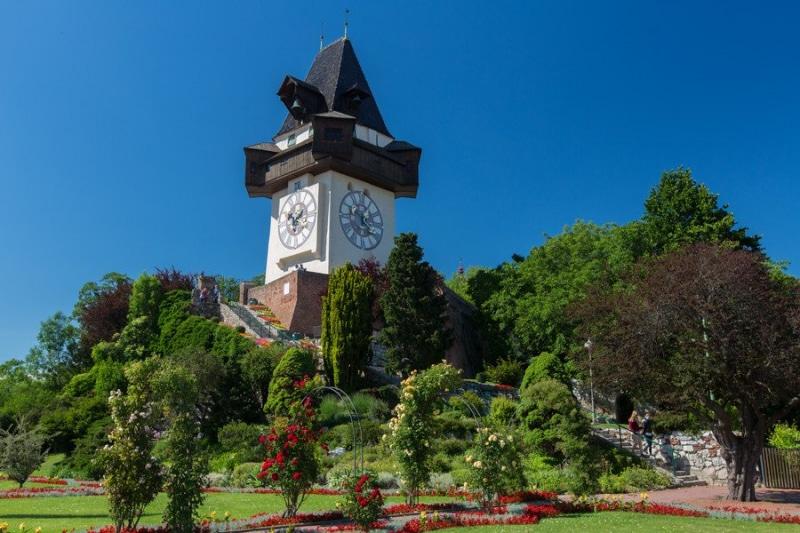
Removed from Unnamed collection
Graz Clock Tower 
The fortified medieval tower got its present shape around 1560. And its characteristic wooden gallery as a fire station. Three bells are ringing from the Clock Tower. Three coats of arms decorate the walls.
A tower on this spot of the hill was first mentioned in the 13th century. When the fortress was reconstructed in the middle of the 16th century, the tower was given its present shape. The hands on the huge clockfaces often confuse people. Is the clock out of order? No. The fact that originally there were only long hands for the hours which could be seen from the distance, and that those for the minutes were added only later caused the "swapping" of the hands. https://www.graztourismus.at/en/see-and-do/sightseeing/sights/clock-tower_sh-1252
Map

Removed from Unnamed collection
Glockenspiel 
The Glockenspiel in the eponymous square in Graz leads the way. A sweet maiden and hearty lad clad in traditional costume pirouette three times a day (11.00, 15.00 & 18.00) up in the gable of the building on Glockenspielplatz square. The mechanism’s cheerful 24 bells play three different melodies. A charming, romantic show beyond compare. Enchanted and each with a spring in their step and a smile on their face, lucky viewers head off once the last note dies away.
In 1884 the spirits producer Gottfried Maurer bought a house in then "Fliegenplatzl" square. On his journeys to North Germany and Belgium the businessman got to know carillons and had one installed in his house in Graz. On Chrismas Eve in 1905, the 24 bells in the iron roof turrent chimed for the first time. In 1929 Gottfried Maurer bequeathed the carillon to the city of Graz, conditional on its continued existence. https://www.graztourismus.at/en/see-and-do/sightseeing/sights/glockenspiel_sh-1243
Map
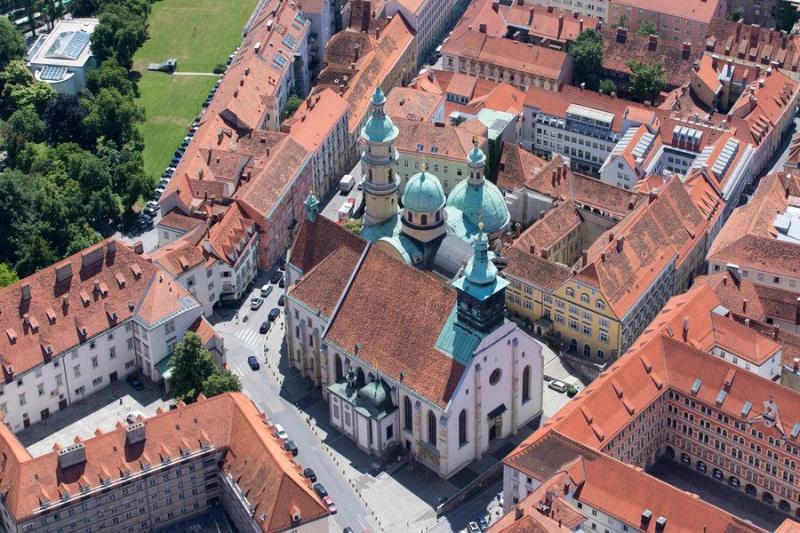
Removed from Unnamed collection
The Cathedral Graz 
Royal-imperial church architecture is crowning the historic city centre. The cathedral is definitely not to be missed on any sightseeing trip round Graz. Don’t be fooled by the relatively restrained exterior. The "Gottesplagenbild", an inspiring relic of splendid Gothic fresco painting, is still in excellent condition today. Inside the cathedral, a multitude of ecclesiastical along with general historical treasures is waiting to be discovered.
Today's cathedral reminds of the days when Graz was an imperial city. Emperor Frederick III erected the church together with his new residence in Graz. In the course of history, the cathedral saw many changes. Construction work of the court and parish church in late-Gothic style was started in 1438, as Jesuit church it was refurbished in Baroque style in the late 17th and early 18th centuries. Since 1786 it has been the cathedral, i.e. the bishop's and main church of the Catholics in Styria.
The exterior of the cathedral looks very sober today. In the Gothic period, however, the façades were covered with paintings. One fresco has been preserved - the so-called Gottesplagenbild ("God's Plagues"). https://www.graztourismus.at/en/see-and-do/sightseeing/sights/cathedral_sh-1241
Map
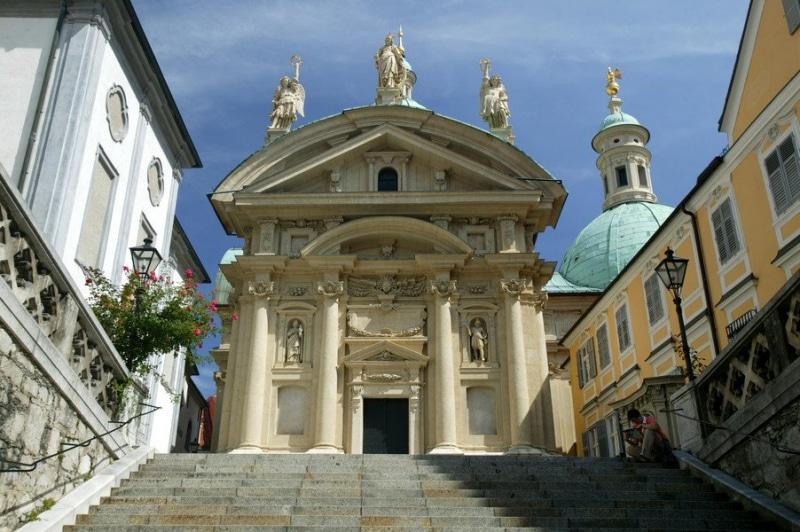
Removed from Unnamed collection
The Mausoleum 
An imperial place of rest next to the Dom. Turquoise domes stand out against the blue sky above the Mausoleum and, together with the Dom and Katharinenkirche church, define one of the city’s magnificent views. You could almost have been whisked away to the lands to the south, given how this ensemble enchants any visitor with more than just a hint of Florentine flair. Here in Graz, Emperor Ferdinand II had his court artist Giovanni Pietro de Pomis lay out the impressive tomb.
The so-called Stadtkrone ("Crown of the Town") of Graz comprises such important buildings as the Cathedral, the Burg, the Old University and today's Seminary (former Jesuit college). But it is the domescape of the Mausoleum which also visually crowns the city. https://www.graztourismus.at/en/see-and-do/sightseeing/sights/mausoleum_sh-1247
Map
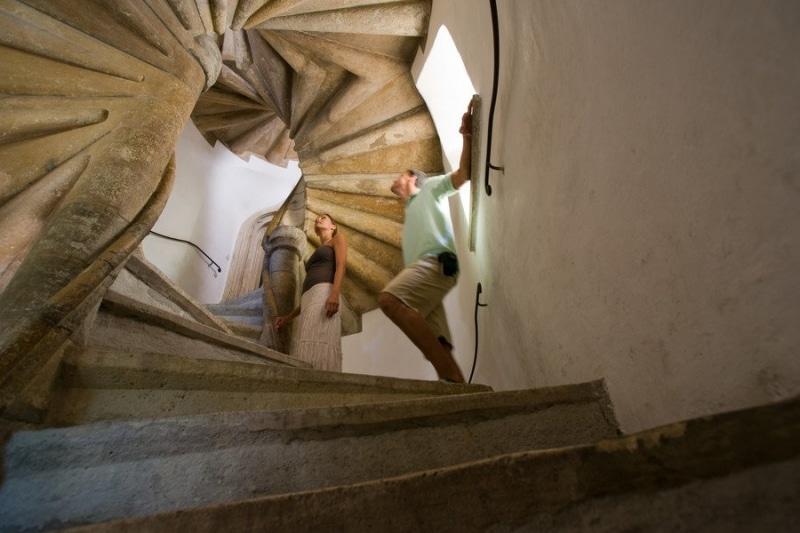
Removed from Unnamed collection
Burg & Double Spiral Staircase 
Separation and reconciliation. Even official architecture can harbour surprises. The Burg in Graz, official headquarter of the regional government, is a real gem. Centuries of reconstruction have yielded interesting elements of the Gothic, Renaissance and Biedermeier eras. Particularly striking is the double spiral staircase, seeming almost like an optical illusion. This “staircase of reconciliation” consists of two opposing spiral stairs, which merge briefly on each floor, part and then rejoin. https://www.graztourismus.at/en/see-and-do/sightseeing/sights/burg-double-spiral-staircase_sh-1240
Map
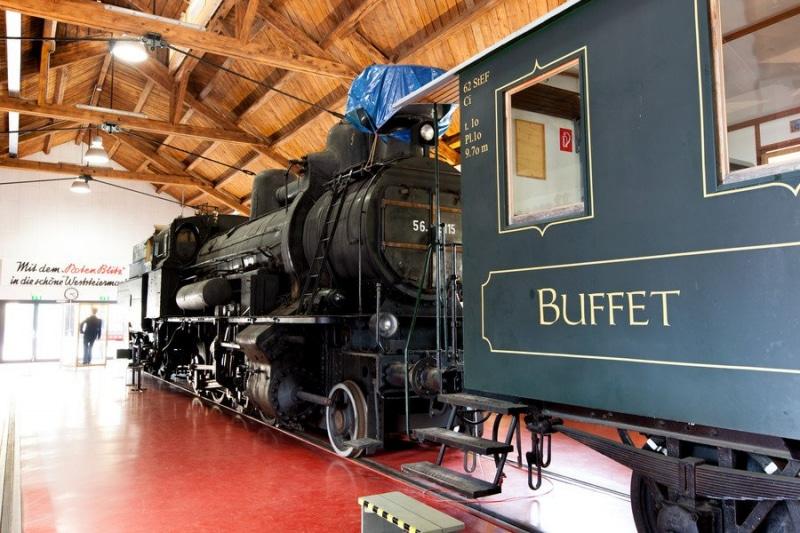
Removed from Unnamed collection
Technical Railway Museum Lieboch 
Tracking down the glory of the past in Lieboch. Housed within the former boiler house at the railway station is the Technical Railway Museum Lieboch. In the museum you can find gems like a steam locomotive from 1914, historical rolling stock and numerous exhibits, as well as experiencing historical, technical and socio-cultural aspects relating to rail transport. Multi-media presentations offer insights into important events in the history and future of Austrian railways. https://www.graztourismus.at/en/see-and-do/sightseeing/trips-around-graz/technical-railway-museum-lieboch_af-1210
Map
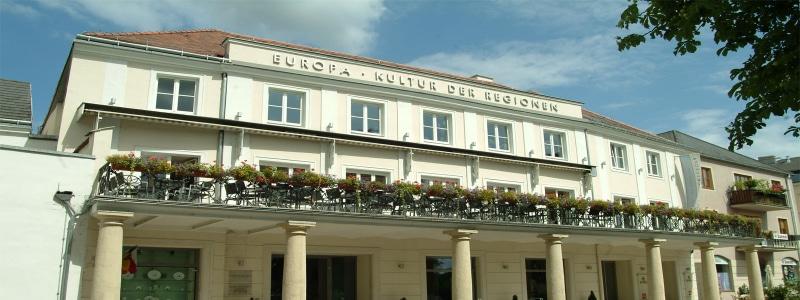
Removed from Unnamed collection
House of Regions 
The House of Regions stands for European culture and the concept of the event hall is based on three pillars: music, dance and literature from the European regions are offered in the ballroom of the house, craft folk art in the shop of folk culture Lower Austria and culinary art from the European regions in the Gastrobetrieben Blauenstein and Weinstein. http://www.volkskulturnoe.at/wirkungsstaetten/haus-der-regionen.html
Map

Removed from Unnamed collection
Burg Rabenstein 
Anything but antiquated, this impressive castle towers over the Mur river valley. This extraordinary event centre, located close to the river Mur cycle route, is open all year and accessible to the public from April to October on. Access to the castle by means of the Atlantis-Shuttle is a unique experience, offering fantastic views of the surroundings. A state-of-the-art energy supply system in the form of a heat pump highlights the successful marriage of history and modern technology. https://www.graztourismus.at/en/see-and-do/sightseeing/trips-around-graz/burg-rabenstein_af-5072
Map
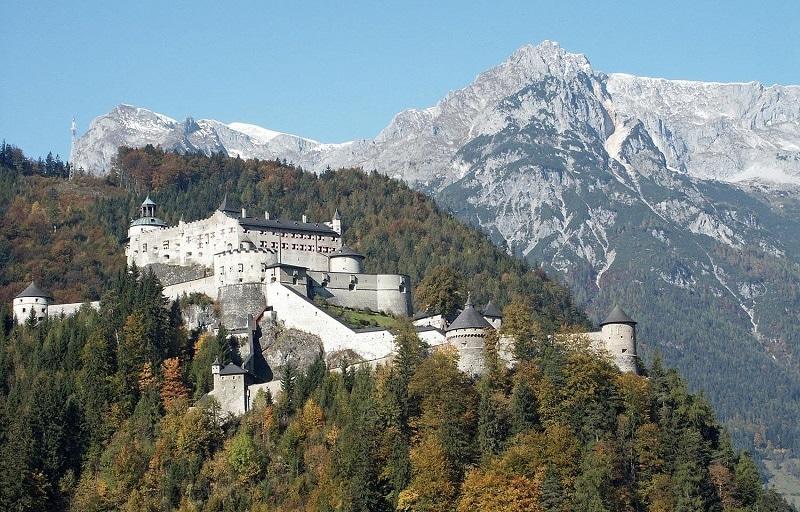
Removed from Unnamed collection
Hohenwerfen Fortress 
900-year-old Hohenwerfen Castle stands amid extraordinary countryside. A former defensive bastion, it is enthroned high above the Salzach River Valley, offering exciting experiences for visitors in search of adventure and culture.
Hohenwerfen Castle promises a unique adventure, and it delivers! Aside from guided tours of the castle, including its exhibition of ancient weapons, a stylish castle tavern and the Knights’ Store, it is the historic State Falconer’s, with its daily falconry shows, that is an absolute magnet for visitors. The first Austrian Museum of Falconry, including a bird-of-prey theme path, is likewise located up at the castle. https://www.salzburg.info/en/sights/excursions/hohenwerfen-fortress
Map

Removed from Unnamed collection
Villa Angiolina 
Visit the Villa Angiolina, a former summer residence and today the seat of the Croatian Museum of Tourism. The museum hosts various exhibitions, workshops and projects that will explain to you why Opatija was a favourite destination for many historical figures.
This is the building that certainly marked the beginning of the tourist epoch in the history of Opatija. Pending its building in 1844. (actually a reconstruction of an older building owned by baron Haller von Hallerxtein); Opatija was a relatively large settlement with about 120 houses, clustered mainly around plots further away from the sea coast and chiefly oriented towards fishing and seafaring. With the arrival of Iginio Scarpa, a patrician from Rijeka, and building of his summer house Angiolina (named after Scarpa’s then already deceased wife, originating from the Sartori family), Opatija opened her doors to a whole line of guests and passengers, among whom it is noteworthy to mention the Austrian empress Mary Ann, the botanist Heinrich Noë, the croatian ban Josip Jelačić and others who in their enthusiasm for the local vegetation and climate spread the fame about Opatija and thus prepared the ground for the future health resort. https://www.visitopatija.com/en/villa-angiolina-learn-about-the-role-of-tourism-in-the-history-of-opatija-p471
Map
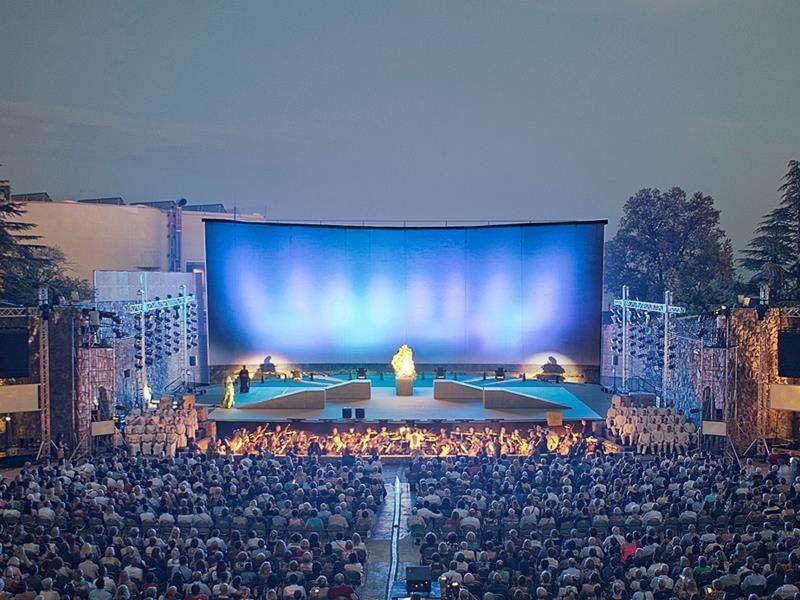
Removed from Unnamed collection
Open Air Theatre 
Opatija, this jewel of the Adriatic Sea, with its tradition in tourism of more than 160 years is one of the best known destinations in Croatia. Situated on the eastern rim of the Mediterranean basin, on the coast of the Kvarner Bay, at the foot of the Učka Mountain slopes https://www.visitopatija.com/en/open-air-theatre-p483
Map

Removed from Unnamed collection
Madonna del Mare Statue 
On the promontory in front of the one-time cemetery, a girl of stone extends her arm to a gull. This, however, is a new sculpture, the work of sculptor Car, and it was erected here in 1956 and turned into one of Opatija’s symbols. Before that, in its place, namely until demolished by a storm, stood the “Madonna del Mare,” the work of sculptor Rathausky from Graz (his also is the fountain “Helios and Selene” in the park between St. Jacob’s Church and hotel Imperial). The “Madonna” was erected to keep vigil over the soul of count Arthur Kesselstadt, who vanished, not far off from that promontory swallowed by the pre-Easter waves in 1891. During that excursion, the countess Fries also lost her life, but her son Georg was saved. Today a gilded variant of the Madonna can be seen in front of Saint Jacob’s Church. http://www.opatija.net/en/sights/madonna-del-mare
Map

Removed from Unnamed collection
St. James' Park 
Located right in the centre of Opatija, St. James’ Park is a recognisable landmark of the town. The well-manicured green lawns and the harmony of colourful flowers make a perfect setting next to the Church of St. James.
The park is distinguished by its neo-baroque fountain with sculptures of Helios and Selene (the god of the Sun and goddess of the Moon in Greek mythology), a work by the sculptor Hans Rathausky. The park stretches down to the sea where the Juraj Šporer Art Pavilion is located – the venue of many artistic events and exhibitions. https://www.visitopatija.com/en/st-james-park-a-harmony-of-colours-and-scents-p480
Map
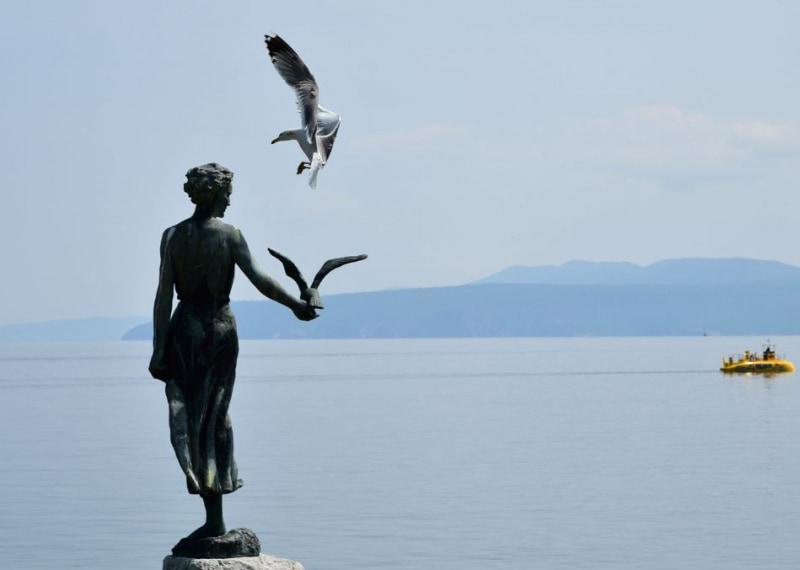
Removed from Unnamed collection
Maiden with the Seagull 
The girl with the seagull is a symbol of Opatija and the whole of Kvarner. An elegant statue on a rock along the coastal promenade Lungomare in Opatija hides an interesting story and the identity of a girl who has been a secret for decades.
The story began back in 1891 when Count Arthur Kesselstadt tragically lost his life in a spring storm at sea in front of Opatija. Overwhelmed with pain, the count's family placed a sculpture "Madonna del Mare" on a rock by the sea to watch over his soul. Time left a mark on the sculpture and damaged it, but it was later restored. Today, the gilded replica is located next to the church of St. Jakov, and the original is kept in the Croatian Museum of Tourism in Villa Angiolina.
When the place where the "Madonna" once stood was left empty, it was decided to place a new sculpture on it. The "Girl with the Seagull" was set up in 1956 on a location with a beautiful sea view. The scene is especially impressive at night, when the sculpture is illuminated by special spotlights, or during storms, when waves crash against the shore and water spills over the rocks, creating the impression of a nymph born from foam. That is why this statue is often called the "Opatija nymph". http://www.visitopatija.net/hr/atrakcije/djevojka-galeb
Map
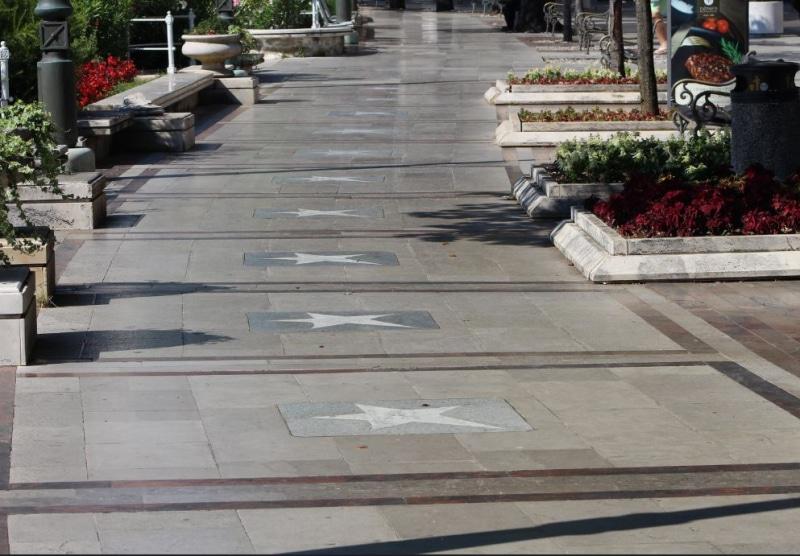
Removed from Unnamed collection
Croatian Walk of Fame 
The Croatian Walk of Fame project in Opatija was launched in 2005 by the Apriori Communications agency as a symbolic tribute to all the people whose sporting, scientific, cultural or artistic endeavours have contributed significantly to the worldwide promotion of Croatia.
Potential candidates for inclusion are nominated by the project's independent Nomination Board consisting of several noted public individuals. From the board's nominations, readers of the media sponsors then cast their vote to decide which two candidates (one living, one awarded posthumously) should have their stars included in the Croatian Walk of Fame. https://www.visitopatija.com/en/croatian-walk-of-fame-p484
Map
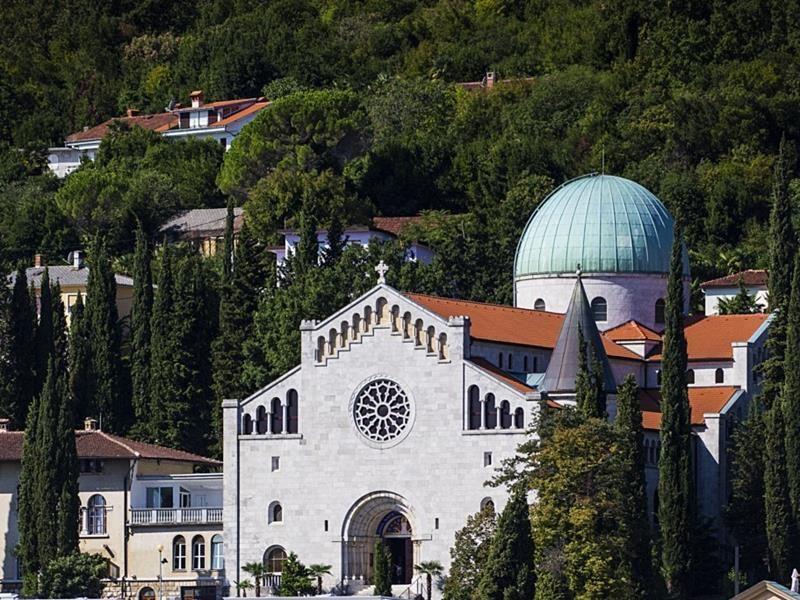
Removed from Unnamed collection
Church of Our Lady of the Annunciation 
This interesting neo-Romanesque building with three naves and a noticeable green dome dates from 1906. Its construction, to the designs of the architect Karl Seidl, was begun by the Austrians and continued by the Italians. https://www.visitopatija.com/en/church-of-our-lady-of-the-annunciation-p478
Map
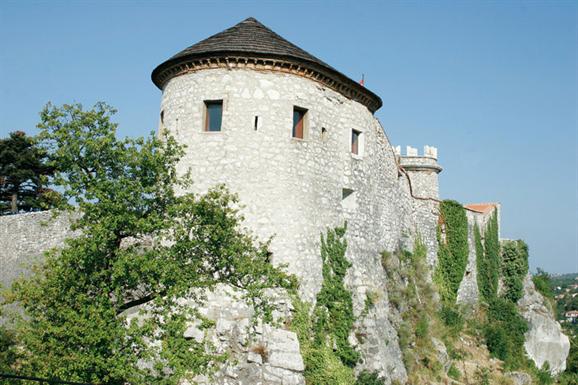
Removed from Unnamed collection
The Trsat Castle 
The Trsat Castle represents a strategically embossed lookout on a hill 138 meters above sea level dominating Rijeka. It was mentioned as a parochial centre for the first time in 1288. At this same site there was a Liburnian observation post from prehistoric times, used for monitoring the roads leading from the hinterland to the coast. http://www.visitrijeka.eu/What_To_See/Attractions/Trsat_Castle
Map
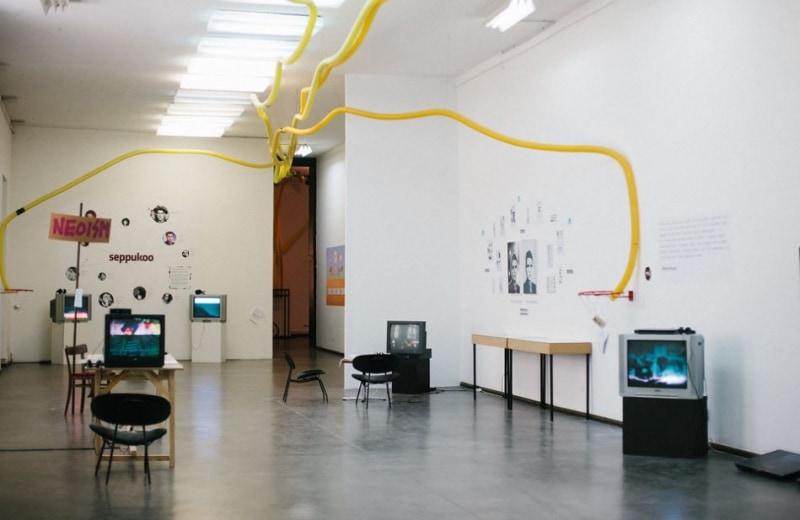
Removed from Unnamed collection
Museum of Modern and Contemporary Art Rijeka 
The museum has its roots in the Fine Arts Gallery built in 1948. Six years later, in 1954, the 1954 Salon was founded - the Exhibition of Contemporary Sculpture and Painting in the Socialist Federal Republic of Yugoslavia (SFRY). This was the first group exhibition of the modern fine arts production of the former state. In 1960 it started the Biennale of Young Artists and in 1968 it presented the International Exhibition of Original Drawings. Since 1990 it has been presenting Croatian artists at the European and Mediterranean Biennale of Young Artists. In 1962 the institution changed its name to the Rijeka Modern Gallery and in 2003 to the Museum of Modern and Contemporary Art.
The Museum is working on a number of collections. These are collections of works by national artists Božidar Rašica, Romolo Venucci and Slavko Grčko, as well as collections of drawings, graphics, sculptures, posters, paintings, photographs and media art. The exhibition activities take place in Krešimirova Street. http://www.visitrijeka.eu/What_To_See/Museums_and_Collections/Museum_of_Modern_and_Contemporary_Art
Map
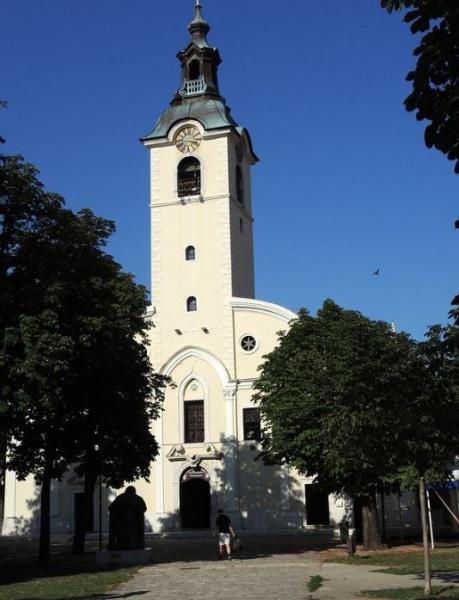
Removed from Unnamed collection
Shrine of Our Lady of Trsat 
The Shrine of Our Lady of Trsat is the largest pilgrimage centre of Western Croatia. Its foundation is reported to be, according to tradition, related to the miraculous transport of the Nazareth Barn, and its stay on Trsat (1291 – 1294). Shortly after the relocation of the Mother of God’s house to Loreto, Prince Nikola I of Krk built the first small church on the place where the barn stood on Trsat.
Marija`s Trsat became a pilgrimage point of convergence, the reputation of which was strengthened by the astounding painting of the Lady of Trsat, which was a gift given to the inconsolable Croats in 1367 by Pope Urban V for the loss of the Holy Barn. In the XV century, the Sanctuary was taken over by Franciscans, who have remained its guardians to the present day. On 8 June 2003, Pope John Paul II attended a long pilgrimage procession. http://www.visitrijeka.eu/What_To_See/Attractions/Shrine_of_Our_Lady_of_Trsat
Map
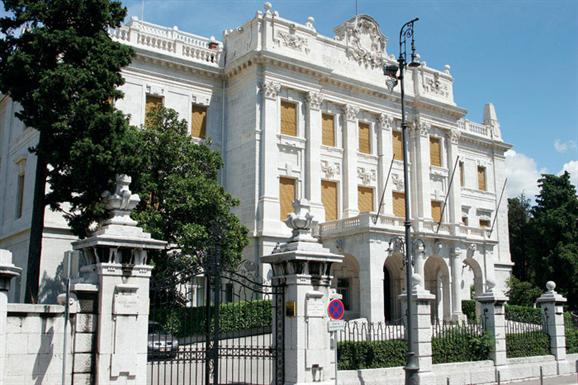
Removed from Unnamed collection
Maritime and History Museum of the Croatian Coast 
The museum is headquartered in the former Governor's Palace, a historicist edifice and protected cultural monument. The Governor's Palace was constructed in 1896 and designed by Alajos Hauszmann, one of the foremost Hungarian architects during the time when Rijeka was under Hungarian rule.
Today, the palace houses the Maritime and History Museum of the Croatian Littoral, which was established in 1961 and comprises maritime, historical and cultural, ethnographic and archaeological departments. Some of the original items from the Governor's Palace, such as furniture and artisan craft-work, have been preserved and exhibited in salons on the first floor. The permanent exhibition of the museum provides an interactive and modern platform for showcasing the long, rich and tumultuous history and culture of living in the area of what is today Primorje-Gorski Kotar County from prehistoric times to the present day.
The Lipa Pamti Memorial Centre (Lipa Remembers), which is dedicated to the victims of the Lipa massacre that took place on 30 April 1944, is also a part of the museum. In addition to its memorial heritage, the Memorial Centre interprets the entire cultural, historical and ethnographical heritage of the Liburnian Karst region (Rupa, Pasjak, Šapjane and Brce) from prehistoric times to the present day. http://www.visitrijeka.eu/What_To_See/Museums_and_Collections/The_Maritime_and_History_Museum_of_the_Croatian_Littoral_Rijeka
Map

Removed from Unnamed collection
Natural History Museum Rijeka 
The Natural History Museum located within the Nikola Host Park was the first regional museum in the Rijeka area, founded in 1876 when Doctor Joseph Roman Lorenz designed its concept in accordance with Vienna’s Naturhistoriches Museum. Initially, the collection was an integral part of the City Museum, but since 1945 it has operated as an independent institution with rich holdings at its current location, within which there were a zoo and an aquarium until the 1960s.
Today, the Museum is oriented towards marine research and has a specialised library in the field of biology, geology and palaeontology. Visitors can enjoy the rich collections and permanent exhibition representing the geological past of the Adriatic, oceanographic research, minerals, marine invertebrates, sharks and rays, the “Aquarium” multimedia centre and reptiles and amphibians from the Rijeka area. http://www.visitrijeka.eu/What_To_See/Museums_and_Collections/Natural_History_Museum_Rijeka
Map
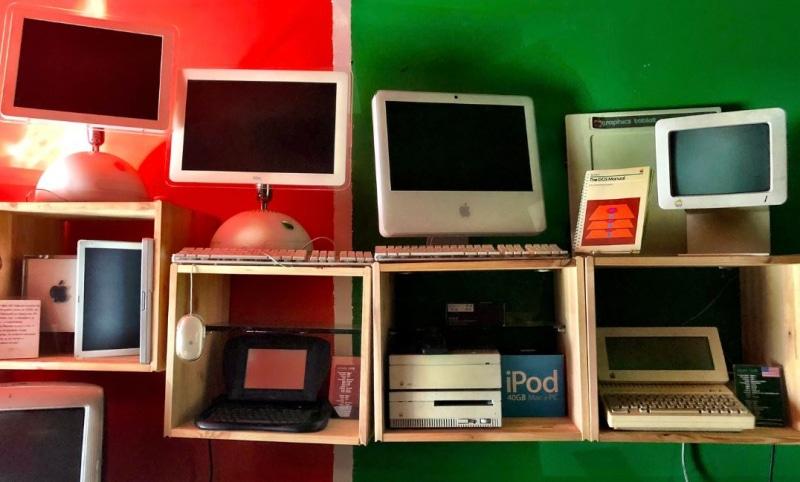
Removed from Unnamed collection
Peek & Poke Computer Museum 
Those who peek into Rijeka’s computer museum and poke through its past will be amazed by the speed at which our technological future has become our past. Under the name Peek&Poke, it is the first Croatian museum of computers and computer equipment. Its founders call it the Retro Computer Club.
Opened in 2007, it welcomes its visitors with exhibits that date back to the 1960s. Some of the oldest exhibits include the pioneers of computer technology, such as Minivac (1961), the first big series personal computer (Apple II), the first affordable home computer (Sinclair ZX80), the first palmtop (Newton), the computer on which Andy Warhol made his art (Amiga 1000) and the great-grandfather of all modern personal computers - the original IBM PC. The museum holds a proof that Croatia was once a leader in one sector of this technology - the first European calculator, manufactured in 1971 in Buje in the Digitron factory, is exhibited here.
The museum has over 2000 exhibits of international and Croatian computer, audio, video and photo technology. Located in the premises of 300 square meters in the city centre, it is one of the first 5 world museums on this subject and is also the largest exhibition of its kind in this part of Europe. http://www.visitrijeka.eu/What_To_See/Museums_and_Collections/Peek_and_Poke_Computer_Museum
Map
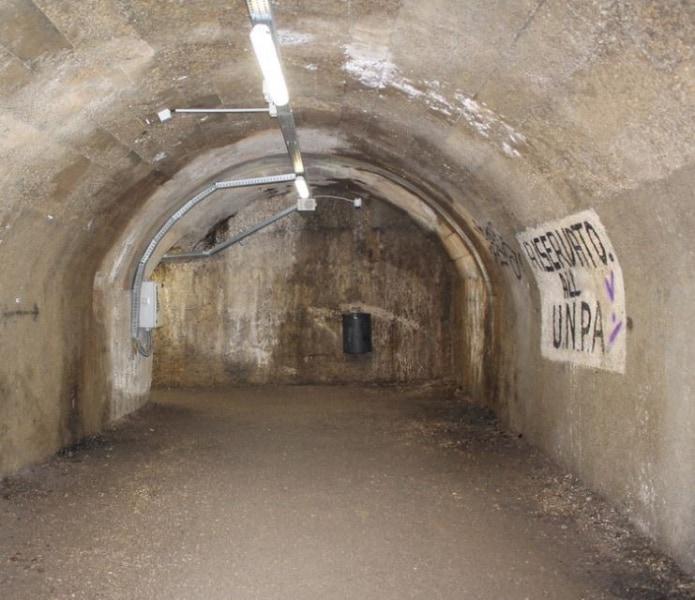
Removed from Unnamed collection
Rijeka Tunnel 
How many times have you visited a military facility as a tourist? Not very often is our guess. Well, Rijeka offers a rare opportunity to do exactly that. And it will lead you underground in the process. The first military tunnel opened exclusively for tourist visits is waiting for you in the very centre of the city.
The decision to build the tunnel arose from the fact that the city sprung up at the crossroads of several historical states, which is why it also became an area of particular military significance. The frequent shifting of borders led to the construction of fortifications. Most of them were built in the years leading up to World War II, during the construction of the so-called Alpine Wall (Vallo Alpino), which was supposed to protect the border between the Kingdom of Italy and the Kingdom of Yugoslavia. The construction of subterranean strongholds, military warehouses, passages and bunkers began in 1931 in order to make the city less susceptible to cannon fire.
The entrance to the tunnel is located next to the Cathedral of St. Vitus and it stretches below the Old Town to the Dolac Primary School. The 330-m long tunnel, which was dug into bedrock from 1939 to 1942 by the Italian military in order to protect civilians from aerial bombings, descends to a depth of 10 m in several places. It is 4 m wide and 2.5 m high on average. The main tunnel bore branches off in two directions, one leading towards the old city hall building and the other to the Cathedral of St. Vitus. http://www.visitrijeka.eu/What_To_See/Attractions/The_Rijeka_Tunnel
Map
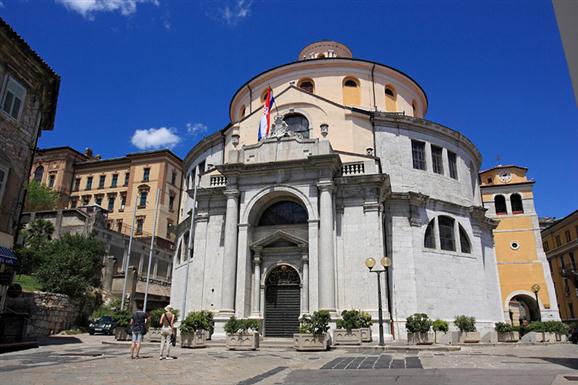
Removed from Unnamed collection
St. Vitus Cathedral 
St. Vitus’ Cathedral is the only Baroque rotunda of monumental proportions built on Croatian soil. The construction of this church, designed by the Jesuit architect G. Briano, began in 1638. It was made on the model of the famous Venetian church of Santa Maria della Salute. http://www.visitrijeka.eu/What_To_See/Monuments/St._Vitus_Cathedral
Map
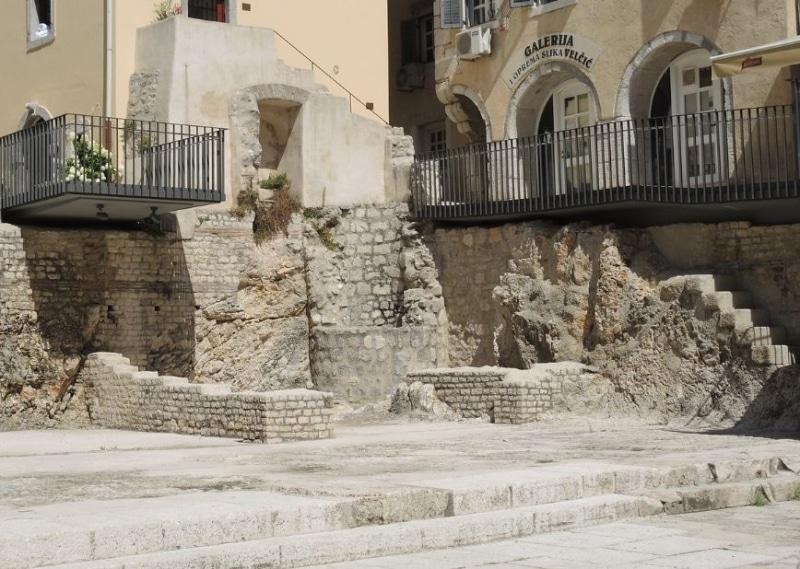
Removed from Unnamed collection
Principia at Tarsatica 
The Old Gate or the Roman Arch is not, as was assumed earlier, a Roman triumphal arch, but a monumental main entrance into the heart of the military headquarters of the late Roman empire Tarsatica, an ancient town on whose ruins medieval Rijeka rose. The people of Rijeka were right to trust their instincts and call it simply The Gate; the term Roman Arch became gradually more accepted from the time of Classicism when the documentation and the research of this monument began.
The profiled facade of the Arch has been preserved only in fragments, the other parts fell off a long time ago or have been taken away to be incorporated into the houses of medieval Rijeka. The Tarsatica Principia was the main camp, the supply base and the starting point of the Claustra Alpia Iuliarum, dozens of kilometres long intermittent defence walls, towers, guard stations, and larger fortifications positioned in key communication lines and elevated points, with the aim of stopping barbaric invasions towards Italy, the heart of the Roman Empire. http://www.visitrijeka.eu/What_To_See/Attractions/Principia_at_Tarsatica
Map
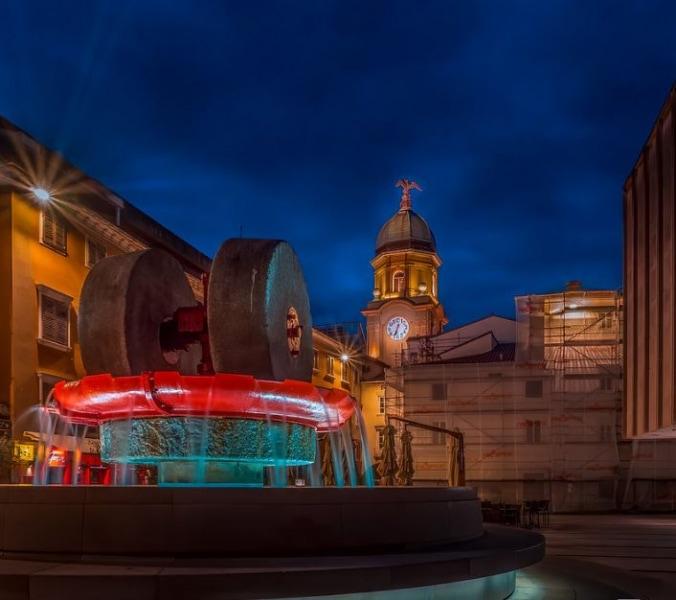
Removed from Unnamed collection
Ivan Kobler Square 
Passing under the round City Tower, the former main medieval town entrance that gave access to the coast, you enter the centre of Rijeka’s Old Town.
Located in the modern-day Ivan Kobler Square, there was once a more compact municipal centre called Placa, which served the significantly smaller fortified medieval town. The most knowledgeable historical interpretations of Rijeka Town present it as vertically elongated, framed to the north and south by the City Tower and the Town Hall, and to the east and west by chains of houses.
The northern part of Rijeka was dominated by the lord's castle, the eastern part featured the main commoners’ church with a cemetery, to the west there was a spacious cloistered enclosure, and here, in the south quarter, near the embankment and the beach market under the town walls, there was the vibrant heart of the Town. There, the citizens of Rijeka would meet to listen to the proclamations of the Town Crier, seal contracts and buy and sell on the open market or in stores situated in the ground floors of houses. Only traces of those houses remain now, with several old walls integrated into more modern buildings, a baroque lintel with the former owner’s coat of arms and an arched underground corn house. In the near past was the former town “Greenmarket” where fruit and vegetables were sold. http://www.visitrijeka.eu/What_To_See/Architecture/Ivan_Kobler_Square
Map
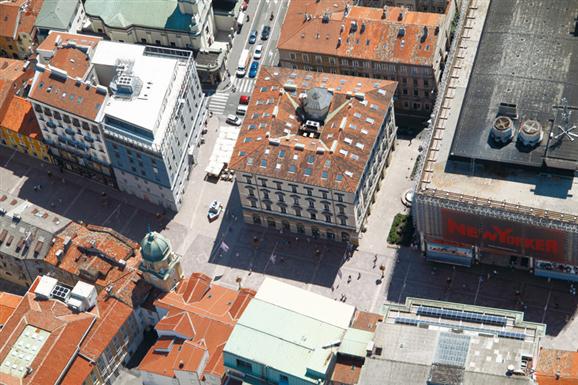
Removed from Unnamed collection
Korzo 
Rijeka is reflected in Korzo, at Korzo you can read Rijeka. Anyone who, at least once, had a coffee at one of the terraces of numerous and picturesque café bars lined along this unusual promenade, would agree. http://www.visitrijeka.eu/What_To_See/Korzo
Map


